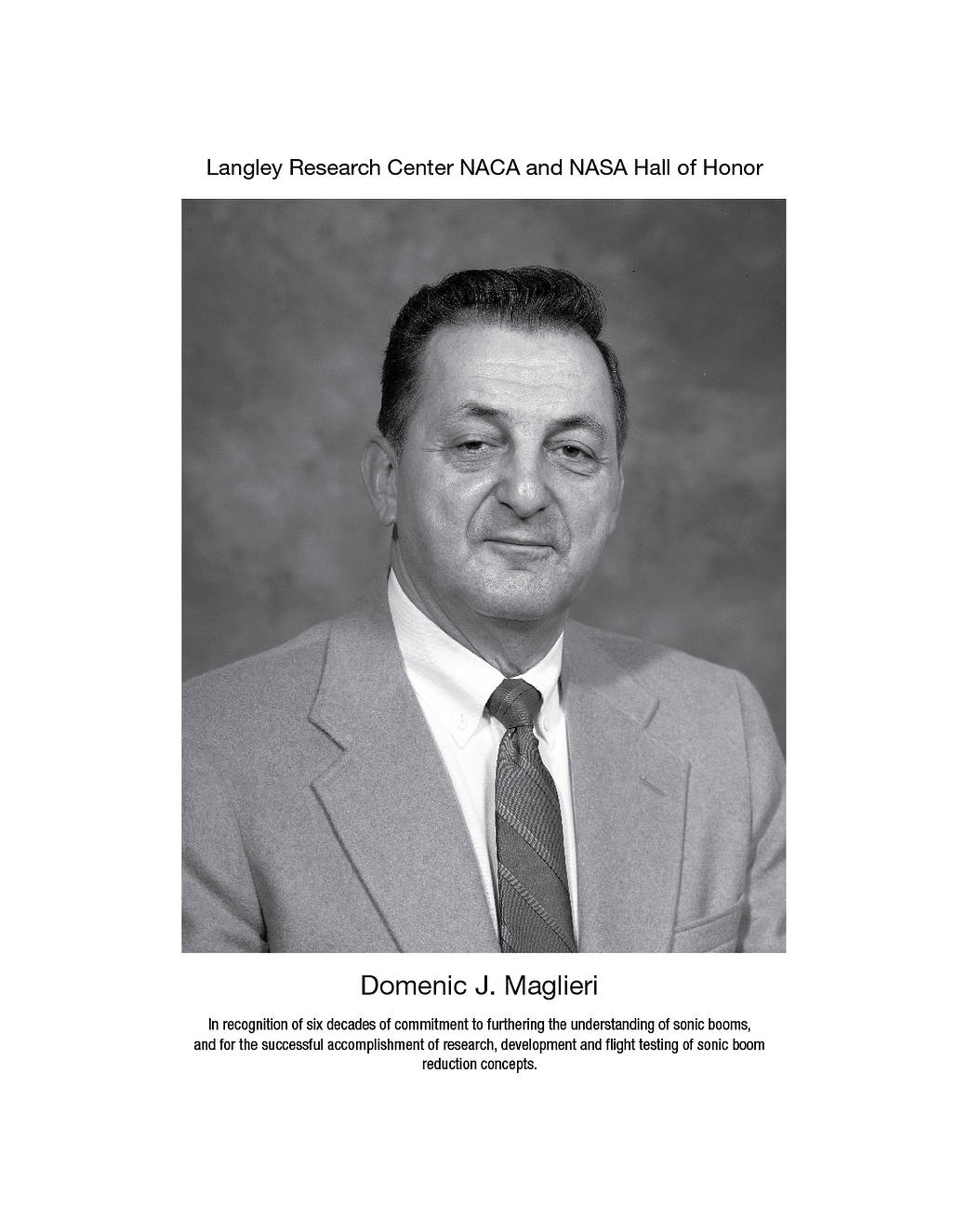Domenic J. Maglieri
Domenic J. Maglieri (1929-) is an internationally recognized expert on sonic boom, the sound created from shock waves when an object moves faster than the speed of sound. His accomplishments include successful research, development and flight testing of sonic boom reduction concepts.
Born in Pittsburgh, Pennsylvania., Maglieri earned his bachelor’s degree in mechanical engineering from the University of Pittsburgh in 1951. He came straight to NASA Langley to enjoy a 35-year career that focused on trying to better understand and predict window-rattling sonic booms that have hampered the development of U.S. supersonic airliners. His involvement started in 1957 with the first sonic boom flight testing and has continued for more than six decades at NASA and in private industry.
NASA assigned Maglieri to develop a sonic boom database. He designed and led flight tests involving NASA, the U.S. Air Force and the Federal Aviation Administration (FAA) that measured the sonic signatures of various aircraft and spacecraft as they broke the sound barrier. The data and its analyses significantly improved the understanding of the sonic boom phenomenon.
In the 1960s, Maglieri was involved in four major community overflight programs in support of the U.S. supersonic transport program. NASA also selected him as the boom evaluator on FAA supersonic transport proposals and he represented the FAA as the U.S. technical observer to Concorde boom flight tests in France.
For a decade, Maglieri advocated for a flight experiment to demonstrate that theoretical approaches to changing the fundamental nature of sonic boom would work in the real atmosphere and quiet impacts on the ground. The result was a 2003 private-public flight test, known as the Shaped Sonic Boom Demonstration, that used an F-5E jet with a modified fuselage to show that the airplane’s shock wave and accompanying sonic boom could be shaped and, thereby, reduced. The test’s success offered hope that with additional research and technology development, quiet supersonic airplanes might one day be able to fly over land instead of restricted to use over water. NASA is currently working with industry on some of those technologies as part of Quesst, a mission that includes flying the X-59 experimental aircraft over communities to collect data that could enable quiet commercial supersonic flight over land.
After his retirement from NASA Langley in 1986, Maglieri continued his work at a private company. He has played a key role in more recent sonic boom research and flight test planning and has mentored and inspired generations of younger researchers.
Maglieri has authored or coauthored more than 170 publications, the majority on sonic boom. He was also the lead in writing the historical and technical review book, “Sonic Boom: Six Decades of Research.” He received six NASA awards, two from the FAA and three from private industry for contributions in the sonic boom arena. He is a fellow of the Acoustical Society of America, a board-certified member of the Institute of Noise Control Engineering and an associate fellow of the American Institute of Aeronautics and Astronautics (AIAA). He was named Peninsula Engineer of the Year in 1990 by the Society of Professional Engineers, and National Engineer of the Year in 1993 by the AIAA.



























